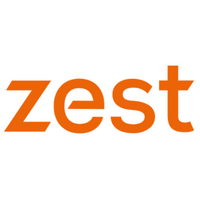Reward Director Masterclass: the evolution of benefits platforms

Benefits platforms play an important role within the modern workplace, allowing employees to easily tailor benefits to their individual circumstances and build a personalised compensation package. Aside from their positive impact on talent attraction and rention, employee benefits can also result in National Insurance savings for the employer and present an additional bargaining chip during pay negotiations.
The evolution of benefit platforms
However, employee benefit platforms are a relatively recent addition to the HR technology landscape, with almost 40 per cent of organisations still using speadsheets to administer their benefit schemes, according to our research, Rewarding Tomorrows Workforce: A Definitive Guide to Workplace Benefits (2018).
This doesn’t come as a surprise. Unlike many core HR processes, benefit specific rules and individual business policies, which govern employee eligibility and funding, result in complex requirements that differ significantly between organisations and indeed have different requirements within a single organisation.
As flexible benefit platforms started to emerge in the early 2000s, these divergent requirements resulted in solutions that were highly customised for individual organisations. The bespoke nature of these solutions pushed up costs, took considerable time to implement and ultimately proved difficult to maintain. Early adopters were restricted to those with large chequebooks and considerable project resource. Those that took the plunge were often left wanting more from their platform.
Our research also revealed that more than 20 per cent of organisations rely on platforms supplied by individual benefit providers. These platforms are often included as part of their service and allow access to advanced, product-specific functionality, such as the management of claims or investment options. However, these disparate systems don’t allow employees to view or manage their overall benefit package and employers must continue to manually administer their scheme.
As a result, the administration of employee benefit schemes has become an industry in its own right. However, managing benefits without the right tools can be a time consuming, costly and error-prone process, which can cause your employees to overlook the true value of their total compensation package.
A new generation of benefit platforms
Flexible benefit platform providers have always made bold claims about better engaging the workforce to attract talent, reduce attrition and eliminate the pain of administration. However, reward professionals have often been left disappointed. Now that a new generation of benefit platforms are starting to deliver on those promises, it’s time to pay attention.
Companies such as Amazon and Uber have disrupted their respective sectors by embracing technology to deliver exceptional consumer experiences. When I entered the employee benefits industry three years ago, I was surprised by the low quality of experiences on offer – platforms suffered from slow load times, complex user journeys and outdated interfaces.
Thankfully, many platforms now provide a fast, responsive and enjoyable employee experience. Finally employers are able to take pride in the platform they provide to their people; allowing them to seamlessly manage their benefits package at any time and from any device.
The single most important leap forward has been the way in which benefits can now be configured within platforms. Gone are the days when you needed a bespoke solution to meet your complex requirements. Benefit nerds (myself included) have spent a lot of time analysing available benefit schemes, finding all the common components, and rebuilding platforms from the ground up, based on a standard but extensive set of configurable options. This means that it’s now quick and easy to accurately reflect complex benefit scheme rules without the need for any technical expertise.
We know that cost remains the single greatest barrier to implementing an employee benefits platform from our Rewarding Tomorrows Workforce: A Definitive Guide to Workplace Benefits (2018) research. By slashing the time it now takes to implement new clients and reducing the associated upfront cost, leading employee benefits platforms are now in the reach of organisations that previously couldn’t afford them. It also removes a significant barrier to switching suppliers for those organisations frustrated with their existing solution.
Furthermore, this simplified approach also reduces the time burden on the client, with changes made in a matter of seconds and set to take affect immediately or at a later date. This will be welcome relief for those who have struggled through the pain of annual renewals with older technology.
Looking ahead
The provision of management information has also radically improved, with standardised data models allowing more intelligent analysis across specific workforce demographics and enabling better benchmarking of individual clients and entire sectors. Organisations can increasingly focus on delivering against tangible outcomes, which can help reward teams to more easily gain support at board level.
The power of this information is only set to increase, with machine learning pushing us towards a future where it will be possible to accurately model how changes to your scheme design will impact benefit uptake and retention rates. It’s truly an exciting time.
Nothing feels less personal as an employee than receiving a generic email that has been sent to the entire corporate directory. Luckily, the way in which benefit platforms enable clients to engage with their employees has moved on considerably over the last few years. Your employee benefit platform should now allow you to send out highly personalised and targetted communications to specific sections of your workforce at exactly the right time. Combined with more tangible, outcome focused management information, you can start to become a lot more intelligent in meeting your corporate objectives.
Lastly, the automation of data between HR platforms, benefit platforms, payroll systems and provider systems has become increasingly simplified thanks to the adoption of standard protocols across both originating and recipient platforms. This has been further aided by increasingly sophisticated off-the-shelf data transformation tools, which have eliminated the need to perform manual file manipulation with only a limited amount of upfront configuration. This has largely removed the need for manual file preparation, and has the potential to eliminate days worth of effort each month.
Matching the hype
Finally the benefit technology market has matured and there are great solutions out there that are now living up to their hype.
So what does all this mean for you? If you already have a benefits platform, now is a good time to confirm it’s still delivering on the claims that were made when you purchased it. If it is, then make sure to capitalise on new functionality as it becomes available. If it’s not, now is a great time to replace it for something that genuinely meets your needs. Implementing a new platform may cost less to set up than your annual renewal fee. Similarly, if you previously dismissed the need for a benefit platform on the basis it was too expensive, then maybe it’s also time to look again.
The author is Graham Meinke, head of product management, Zest.
This article was provided by Zest.
Supplied by REBA Associate Member, Zest
Zest is the next generation platform that’s reinventing the world of employee benefits.







